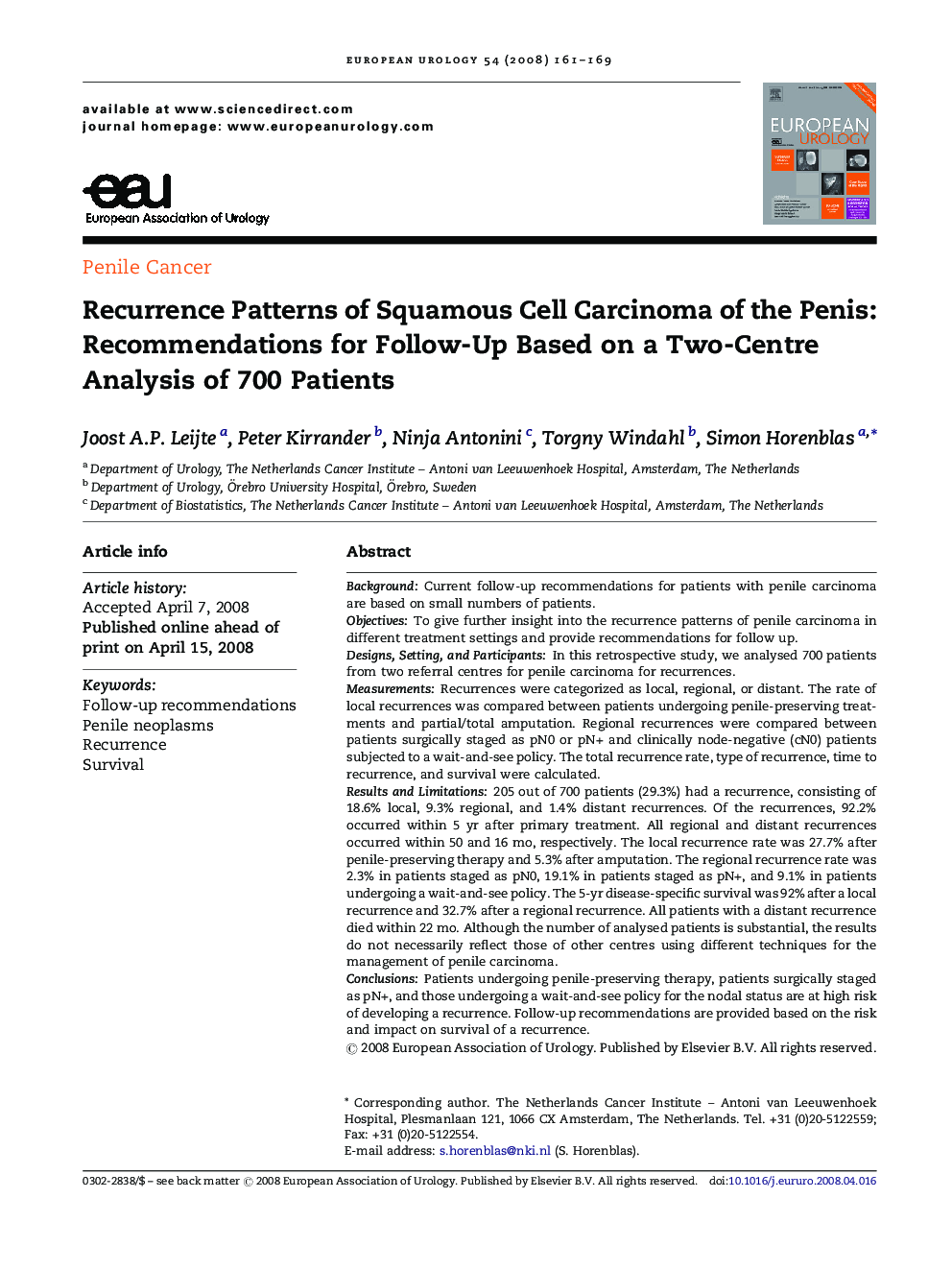| Article ID | Journal | Published Year | Pages | File Type |
|---|---|---|---|---|
| 3923292 | European Urology | 2008 | 9 Pages |
BackgroundCurrent follow-up recommendations for patients with penile carcinoma are based on small numbers of patients.ObjectivesTo give further insight into the recurrence patterns of penile carcinoma in different treatment settings and provide recommendations for follow up.Designs, Setting, and ParticipantsIn this retrospective study, we analysed 700 patients from two referral centres for penile carcinoma for recurrences.MeasurementsRecurrences were categorized as local, regional, or distant. The rate of local recurrences was compared between patients undergoing penile-preserving treatments and partial/total amputation. Regional recurrences were compared between patients surgically staged as pN0 or pN+ and clinically node-negative (cN0) patients subjected to a wait-and-see policy. The total recurrence rate, type of recurrence, time to recurrence, and survival were calculated.Results and Limitations205 out of 700 patients (29.3%) had a recurrence, consisting of 18.6% local, 9.3% regional, and 1.4% distant recurrences. Of the recurrences, 92.2% occurred within 5 yr after primary treatment. All regional and distant recurrences occurred within 50 and 16 mo, respectively. The local recurrence rate was 27.7% after penile-preserving therapy and 5.3% after amputation. The regional recurrence rate was 2.3% in patients staged as pN0, 19.1% in patients staged as pN+, and 9.1% in patients undergoing a wait-and-see policy. The 5-yr disease-specific survival was 92% after a local recurrence and 32.7% after a regional recurrence. All patients with a distant recurrence died within 22 mo. Although the number of analysed patients is substantial, the results do not necessarily reflect those of other centres using different techniques for the management of penile carcinoma.ConclusionsPatients undergoing penile-preserving therapy, patients surgically staged as pN+, and those undergoing a wait-and-see policy for the nodal status are at high risk of developing a recurrence. Follow-up recommendations are provided based on the risk and impact on survival of a recurrence.
